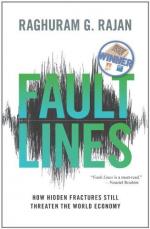|
This section contains 1,024 words (approx. 4 pages at 300 words per page) |

|
Fractures and faults are planes of tensile or shear failure at microscopic to regional scales in brittle rocks. Faults may constitute a single plane or comprise zones of parallel or oblique shear planes, fault breccia or gouge (finely ground rock) across which there has been relative displacement of rocks on either side. Faults and fractures dominate approximately the upper 9 mi (15 km) of the earth's crust. Earthquakes are the expression of rapid displacement along faults. Most upper crustal rocks deform in a brittle manner at rapid deformation (strain) rates due to low temperature and confining pressure. Faults and fractures also develop in competent rocks at deeper crustal levels and in some dry rocks in the lower crust.
Fractures develop when the applied stress exceeds a rock's elastic limit. Regional stresses in plate interiors responsible for fracturing and faulting may represent far-field effects of tectonic forces...
|
This section contains 1,024 words (approx. 4 pages at 300 words per page) |

|


